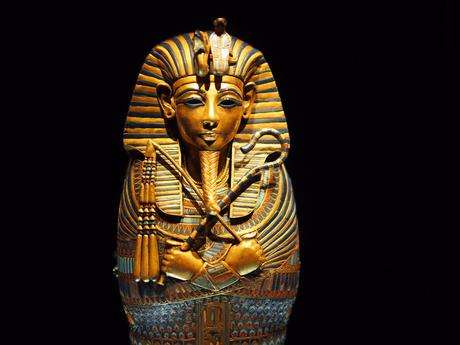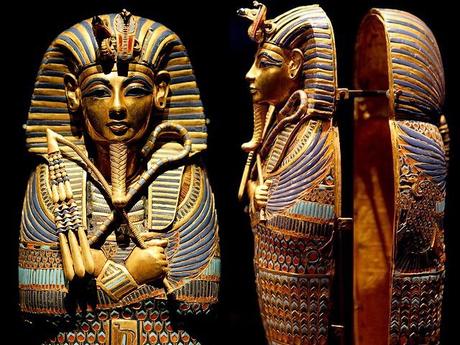
The most famous Egyptian pharaoh today is, without doubt, Tutankhamun. However, before the spectacular discovery of his almost intact tomb in the Valley of the Kings in November 1922, Tutankhamun was only a little known figure of the late 18th Dynasty. Tutankhamun was born in 1343 BC. Tutankhamun was first known as Tutankhaten, meaning “Living Image of Aten”. The background of King Tut encompasses one of the most chaotic periods in the history of Ancient Egypt. It was the time when the lives of all Ancient Egyptians were turned upside down. The father of Tutankhamun was Akhenaten who became known as the heretic king. The religious ideas of his father radically changed Ancient Egypt from a polytheistic religion, worshipping many gods, to monotheism which was the worship of one god – the Aten depicted as the sun disc.

The Ancient Egyptians had worshiped the same gods for literally thousands of years – the number of gods they worshiped numbered nearly 2000. The Ancient Egyptians were forced to abandon their old gods and Akhenaten used the might of the Egyptian army to enforce these ideas and destroy the old religion and its priesthood. The entire population of Thebes, numbering over 20,000 people, were moved to the new city of Armana which Akhenaten had built as his new capital.

The powerful priests of Amun were expected to worship the sole god Aten. Akhenaten ordered that all images of all other gods were ordered to be destroyed. The traditional temple based economy, run by priests of Amun, had been replaced by the new regime, run by local administrators and military commanders. At about the age of eighteen or nineteen, Tutankhamun died suddenly, leaving Ankhesenamun alone without an heir in her early twenties. The grieving queen would have to continue in her official capacity as queen of Egypt and play a major role in finding a successor.An inscribed ring and gold foil fragments found in the Valley of the Kings depict Ankhesenamen together with her husband’s successor, Ay, but there is no clear indication that they were married. Her name never appeared within his tomb and it is believed that she may have died during or shortly after Ay’s reign, as she disappears from history shortly after his period.
* Information on the traditional uses and properties of herbs/ animals/ yoga/ places are provided on this site is for educational use only, and is not intended as medical advice. all image credit goes to their Photographers.
